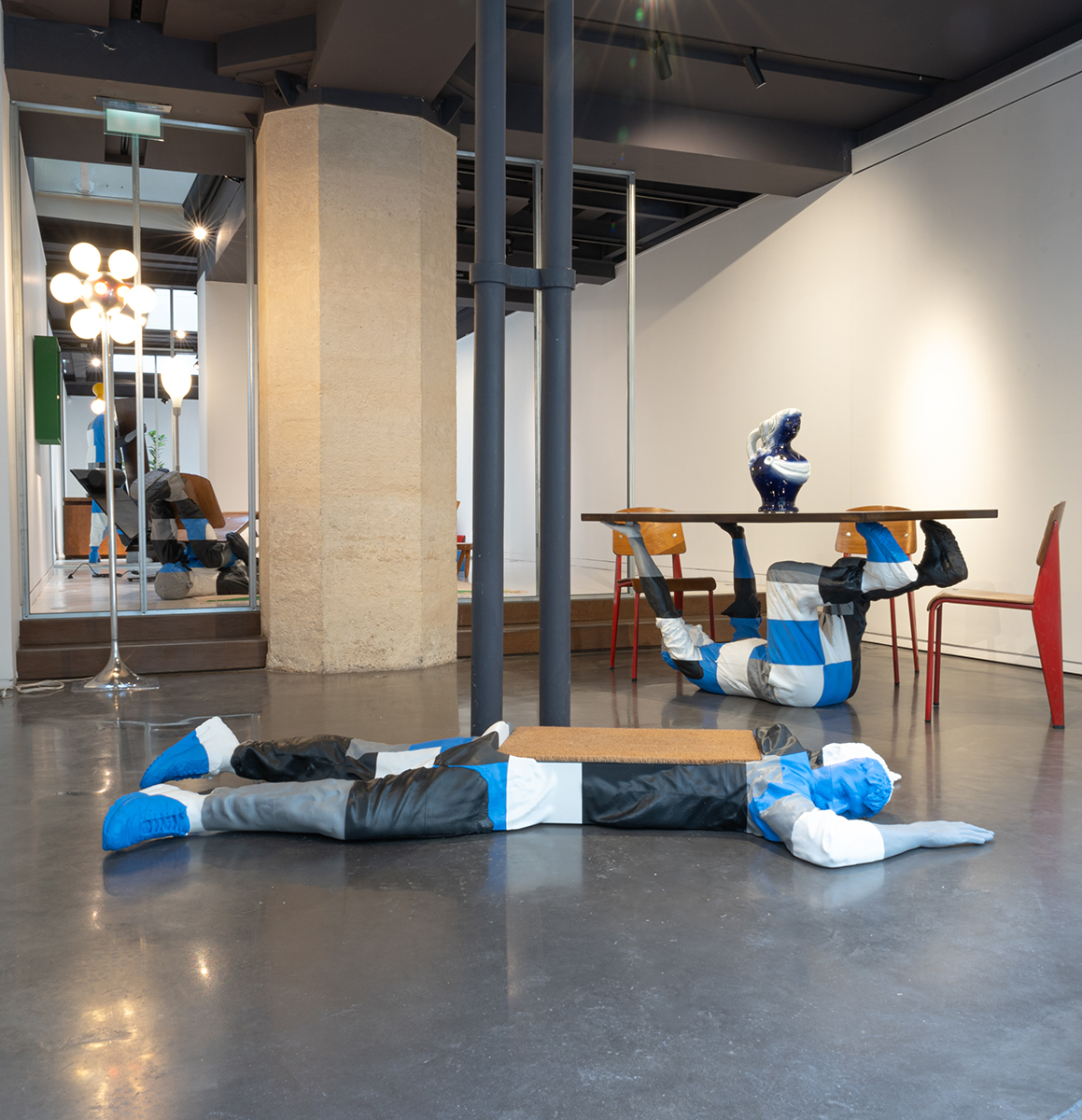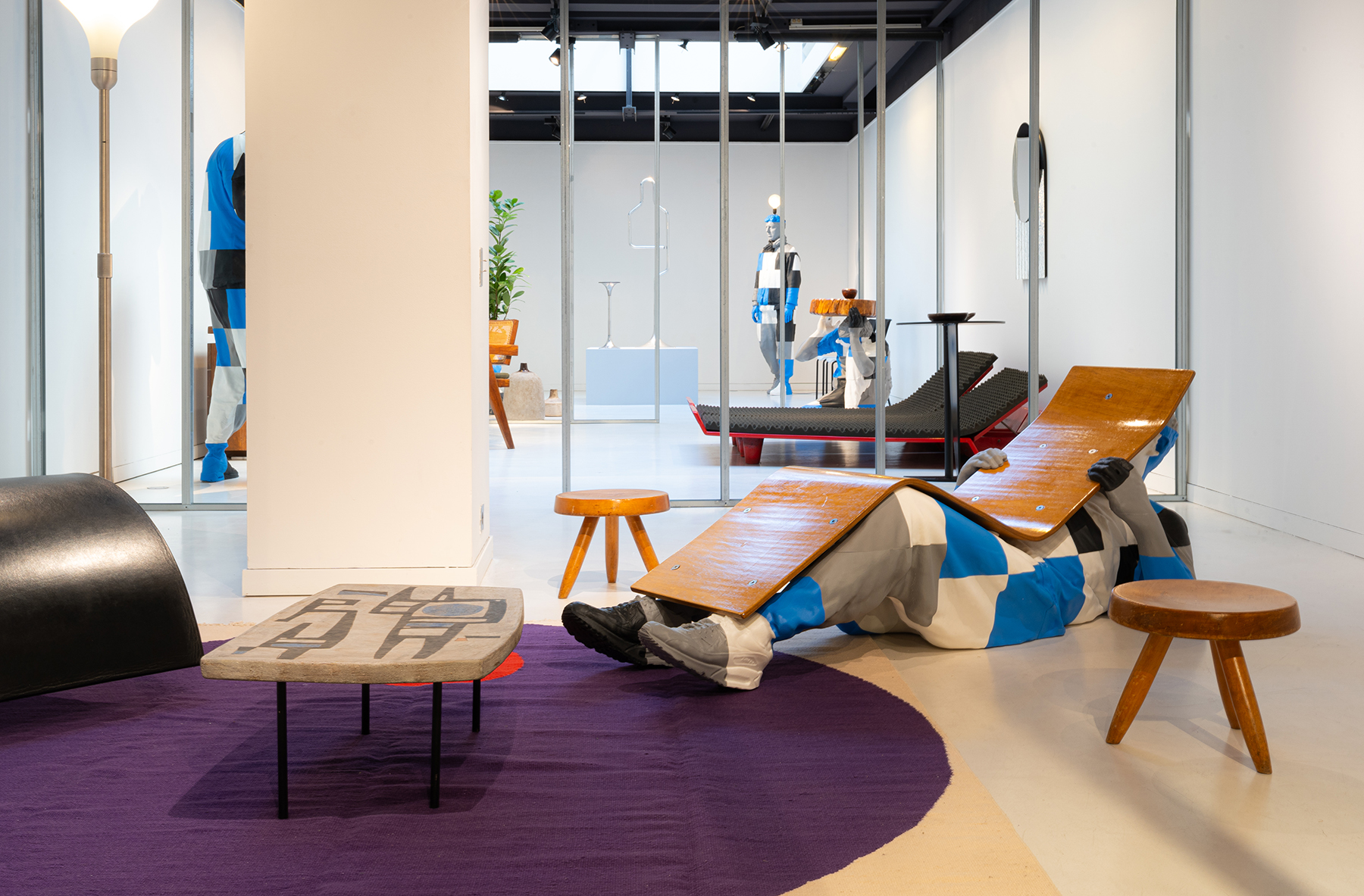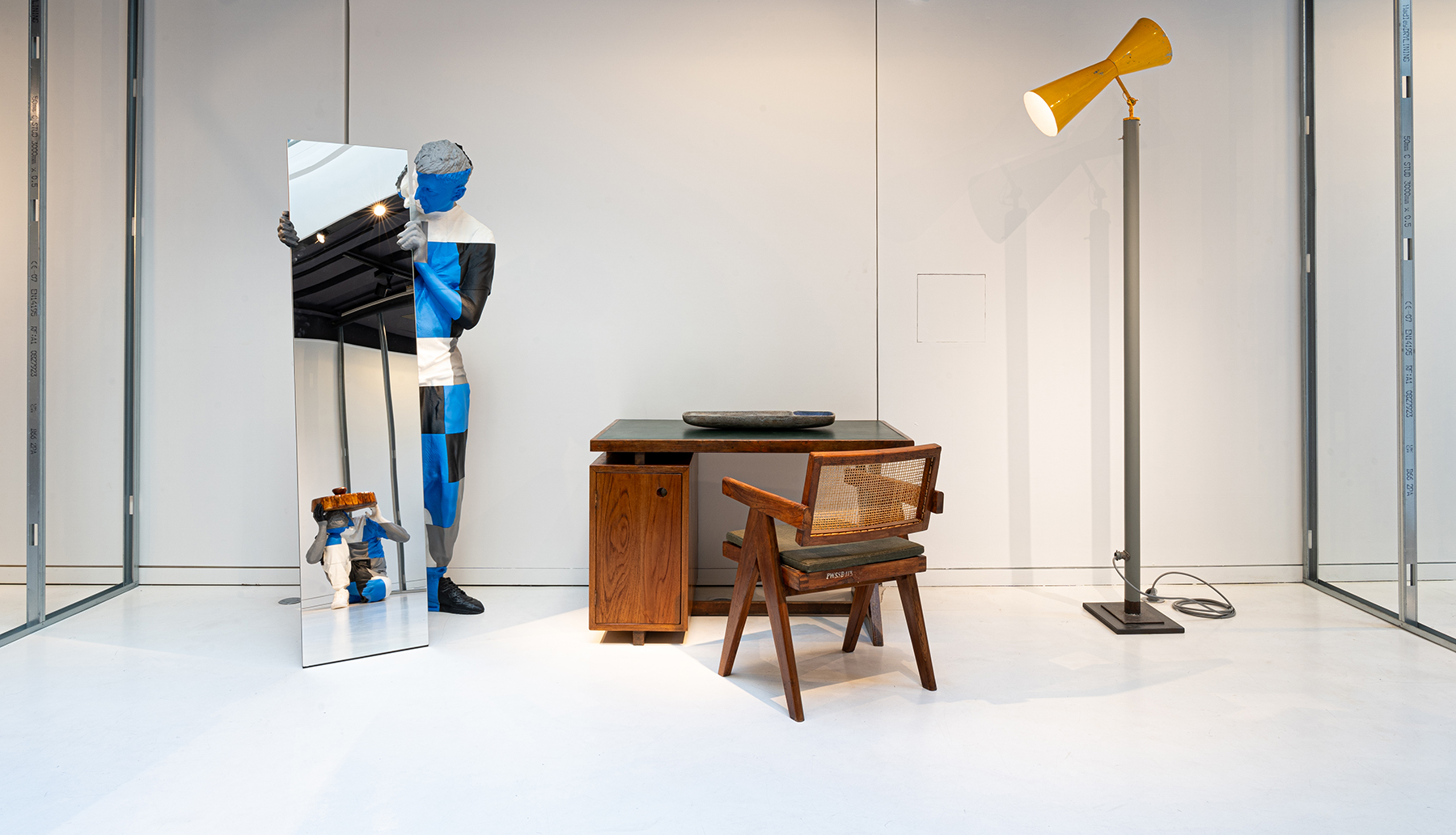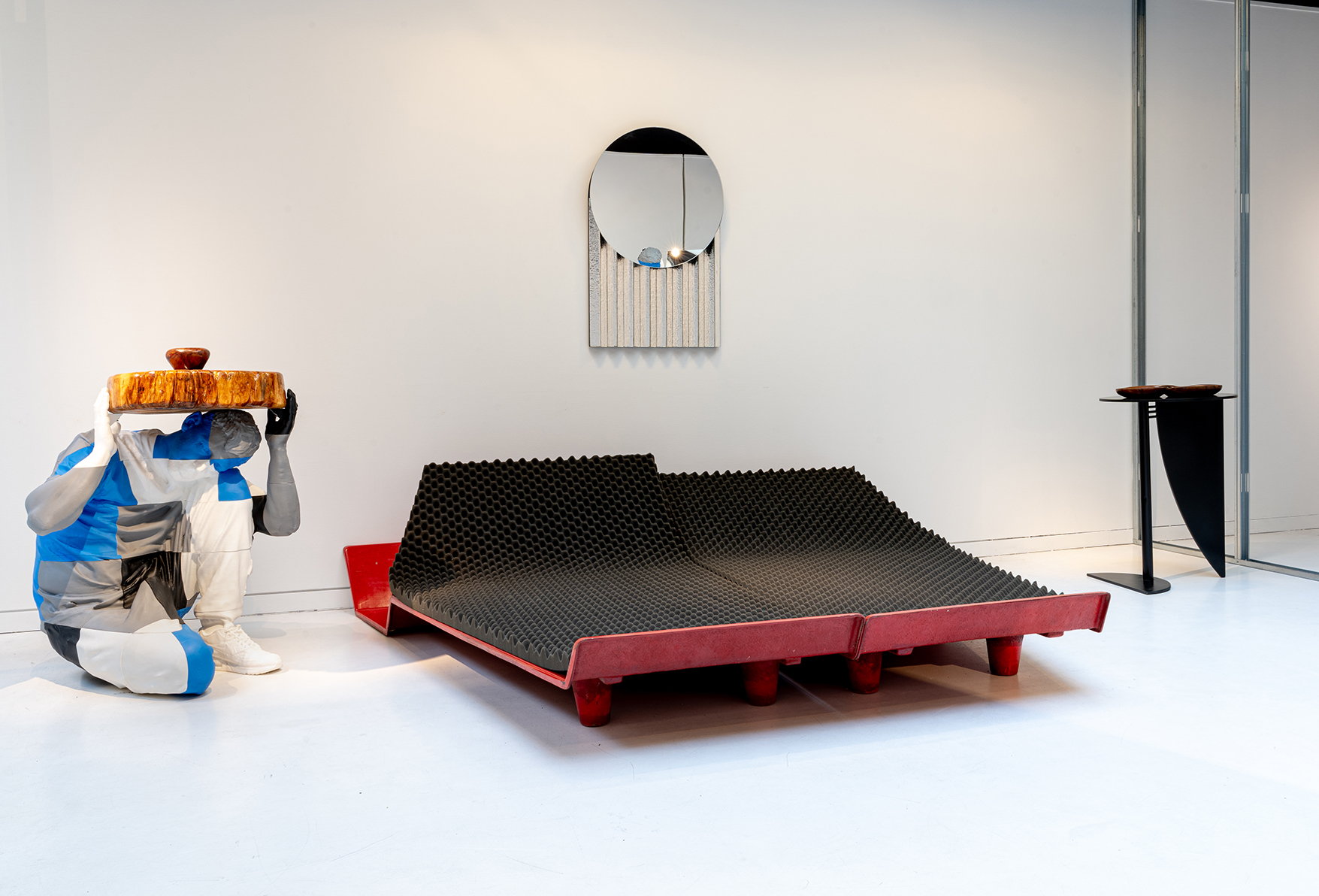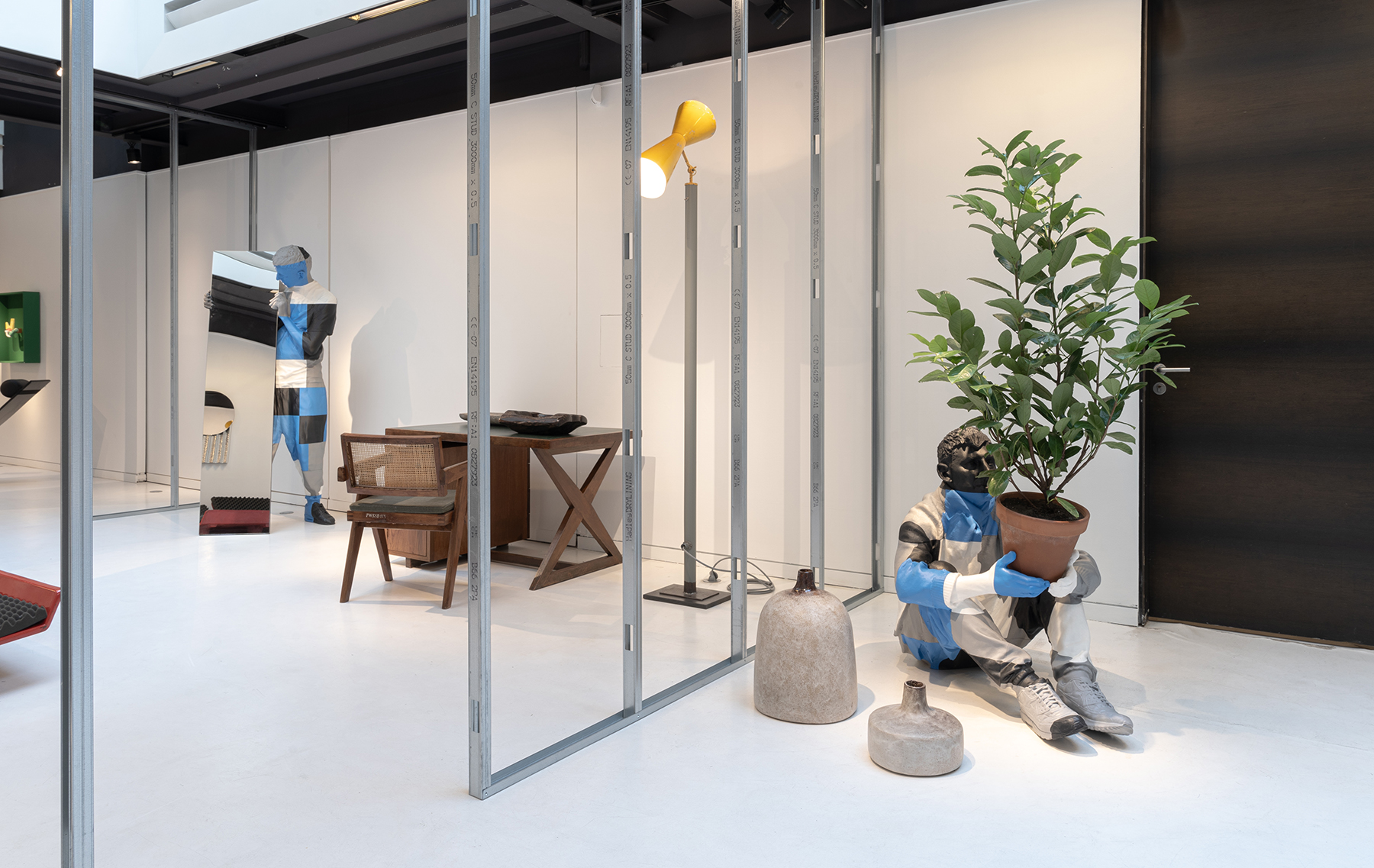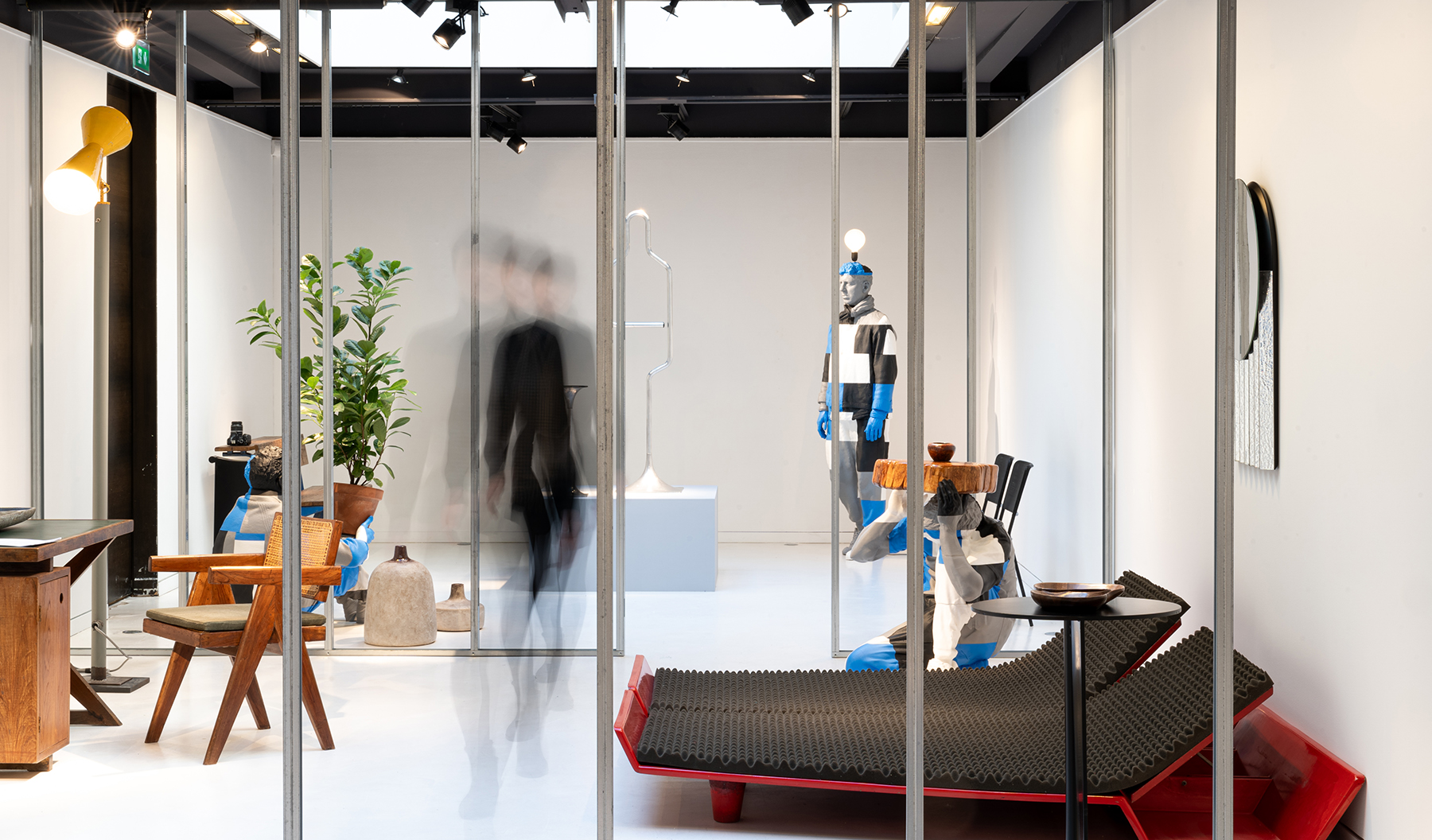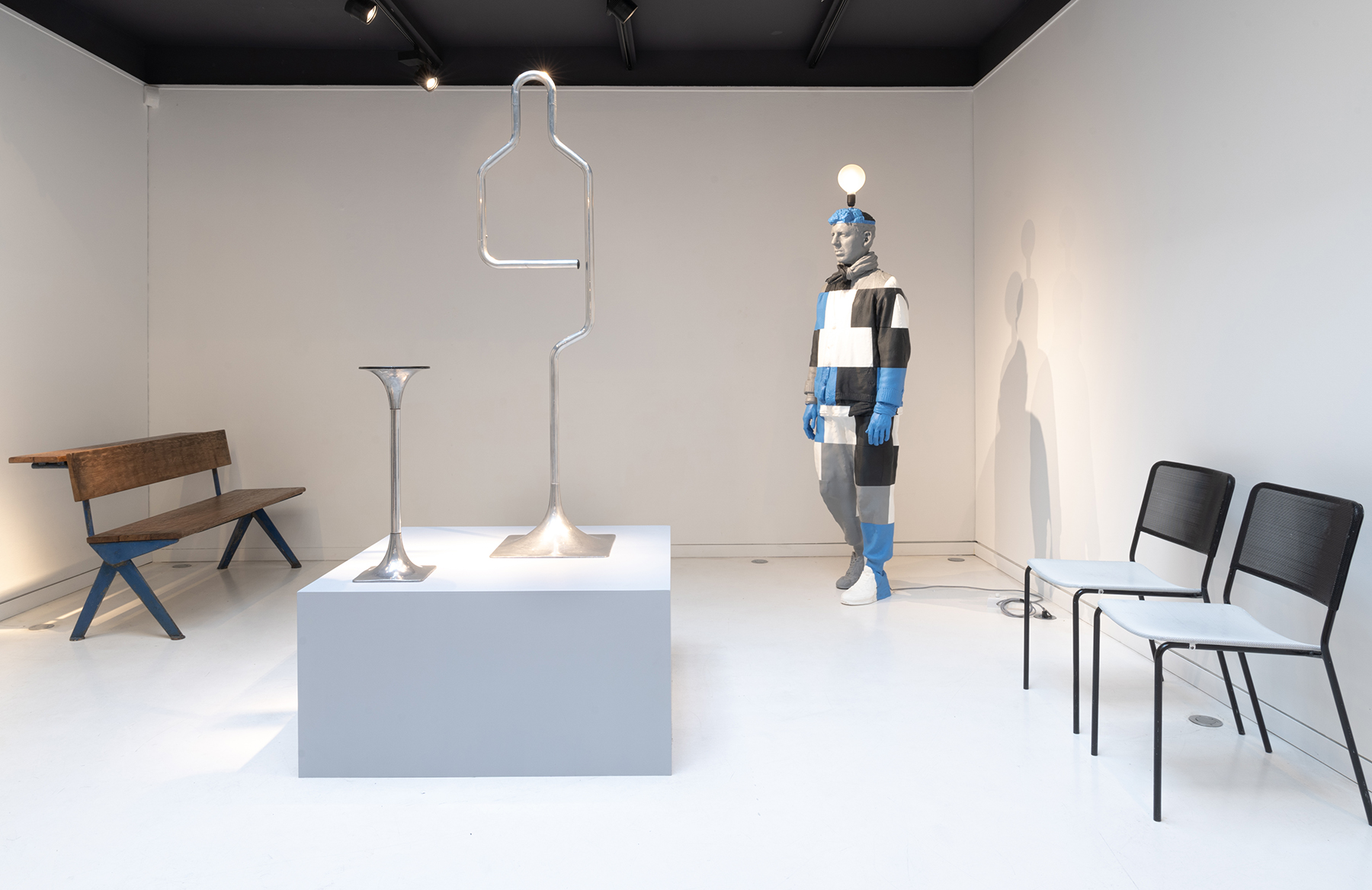Matthew Darbyshire, Caryatids
In situ
18 January 2024 - 17 February 2024
Jousse Enterprise is delighted to collaborate with British artist and designer Matthew Darbyshire on his first solo presentation at the Architect Furniture space on Rue de Seine, Paris.
Caryatids comprises a series of eight new furniture-sculptures by Matthew Darbyshire, installed alongside — and in dialogue with — key pieces from the Jousse design archive. Installed in what has come to be known as Darbyshire’s customary exhibition format, the layout of a fictive apartment, his introduction of functionality and physical gesture into his object-making develops his ongoing pre-occupation with design history, and marks a shift towards a more socially conscious and performative practice. This new body of work also extends the British artist’s interest in contemporising Classical forms, and furthers his fascination with new materials and manufacturing techniques, whilst maintaining his biting humour and critique of 21st Century culture.
As the title suggest, Darbyshire’s Caryatids draw on Grecian anthropomorphic columns, although where we might expect precisely draped female forms, we are offered instead the 3D printed figures of the dishevelled male artist in his scruffy studio attire, dressed for private labour rather than public display. These 8 works support not the grand entablature of a Classical temple, a shelter for statues of the gods, but the unremarkable surfaces of seats, table tops and door mats, items that facilitate prosaic and very human actions such as sitting, eating, and wiping our feet.
Gesturing beyond the Grecian caryatid, the poses adopted by Darbyshire’s sculptural double also contain echoes of figures that feature in an array of iconic objects from art’s long history. Looking at these works, we might be reminded of a Ghanaian Luba stool, or of the 2nd century AD Farnese Atlas, or even the kitsch bronze Manneken Pis urinating in a Brussels fountain. Equally, we might find ourselves recalling a number of signal works from the field of expanded post-War sculpture, among them the clock faces in Ed Kienholz’s installation The Beanery (1965), Bruce Nauman’s Self Portrait as a Fountain (1966), Charles Ray’s Plank Pieces (1973) and Bruce McClean’s Pose Work for Plinths (1971).
A suite of objects in which Darbyshire offers up his printed double as a kind of domestic helpmeet, his Caryatids also pay homage to a seam of performance art that investigates notions of service. We might think of Helen Chadwick’s photo series In The Kitchen (1977), where she presented female performers dressed as appliances in hybrid objects/garments, or of Mierle Laderman Ukeles’ ground-breaking conversion of artistic ‘process’ into domestic and civic ‘maintenance’ in her artistic residency at the New York City Department of Sanitation in 1977.
Strikingly, their projects date from the same decade as Allen Jones’s controversial furniture-sculptures Hatstand, Table and Chair (1970), which employed fibreglass figures of young women dressed in fetish wear as stand-ins for the titular furnishings. By using his own male, middle-aged, unerotically-garbed body as the basis for useable items of furniture, Darbyshire satirizes the sexist assumptions behind Jones’ work.
The Caryatids, of course, have antecedents in the world of design too. These include such anthropomorphic furnishings as Roger Tallon’s Zombie chair of 1964, Verner Panton’s Series Emmenthaler recliner (1979), Philippe Starck’s noughties Gnome stools, and Olivier Mourgue’s 1970s Bouloum chairs. Significantly, a number of these objects have been platformed by Philippe, Patricia and Matthias Jousse over the course of their long careers.
Darbyshire’s furniture-sculptures also make more direct reference to some of the designers most regularly championed by Jousse Enterprise, whose works also feature within the exhibition. In Caryatids, we can detect proxies of Jean Prouvé’s tell-tale bent plywood seat, Roger Tallon’s light bulb head, Maria Pergay’s planters, Pierre Jeanneret’s dark teak table tops, Alexandre Noll’s carved totemic slabs, and even Pierre Paulin’s carpets.
Caryatids is, then, an exhibition in which (sometimes contradictory) episodes from the history of art and design cross-pollinate, to mordantly humourous effect. At the same time, the artist’s frozen, mime-like poses signal his anxieties around the perceived role and status of the artist today, subtly mocking the many clichés that cling to creative work, among them the artist as genius, loner, servant, stoic, facilitator, labourer, narcissist, beggar, hedonist and even prostitute.
Each Caryatid derives from a 3D scan of the artist, manufactured using state-of-the-art 3D printers and rigid vegetable based eco-plastics. This very 21st century technology is combined with traditional carpentry and metalwork techniques, in order to ensure that these works meet the demands of their anticipated use as pieces of practical furniture. The Caryatids’ palette of stock blues, greys and blacks mimic hues employed in the rapid prototyping design industry, whilst also calling to mind the variegated patterns found in the costume of the Harlequin—a stock comic figure who combines elements of the dutiful, put-upon servant and the mischievous, quick-witted clown.
photo Max Borderie
Opening : 18/01/2024 6:00 am
Exhibition's artists >
Exhibitions's Artworks
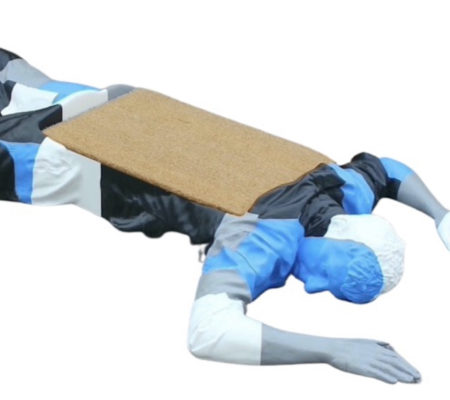 Door mat (in homage to Pierre Paulin), 2024
Door mat (in homage to Pierre Paulin), 2024
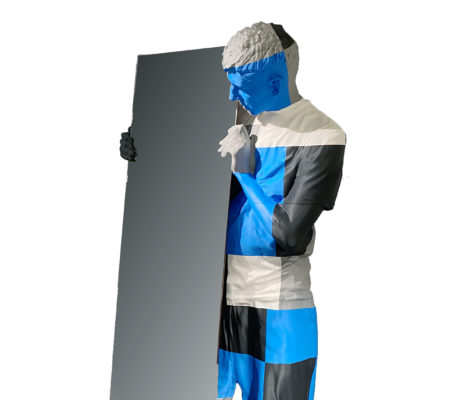 Mirror (in homage to Victoria Wilmotte), 2024
Mirror (in homage to Victoria Wilmotte), 2024
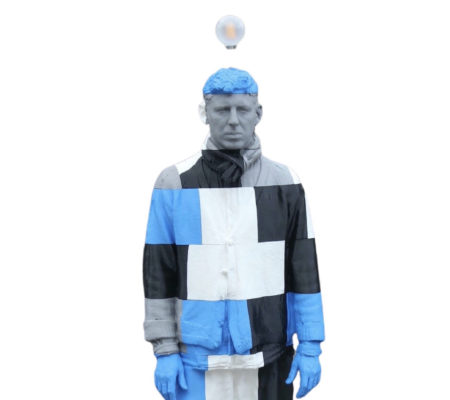 Standard lamp (in homage to Roger Tallon), 2024
Standard lamp (in homage to Roger Tallon), 2024
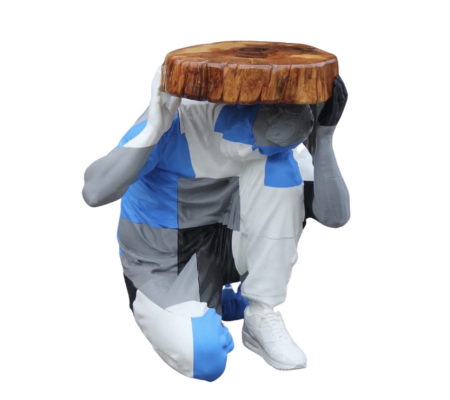 Side table (in homage to Alexandre Noll), 2024
Side table (in homage to Alexandre Noll), 2024
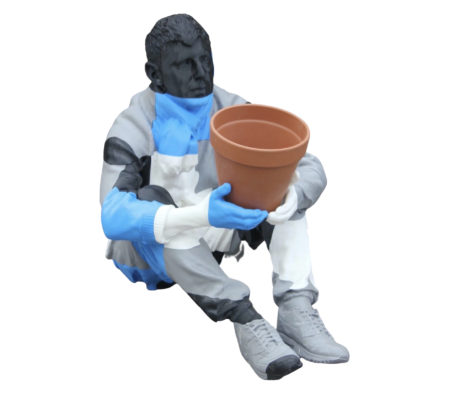 Planter (in homage to André Borderie), 2024
Planter (in homage to André Borderie), 2024
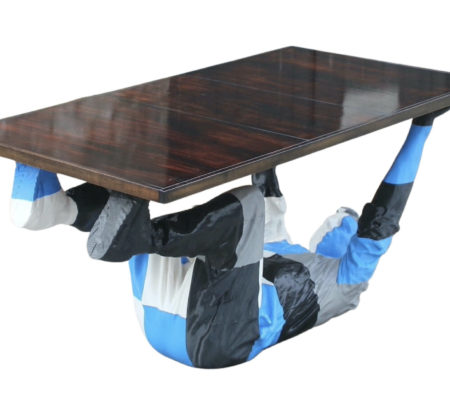 Dining table (in homage to Collectif Pierre Jeanneret), 2024
Dining table (in homage to Collectif Pierre Jeanneret), 2024
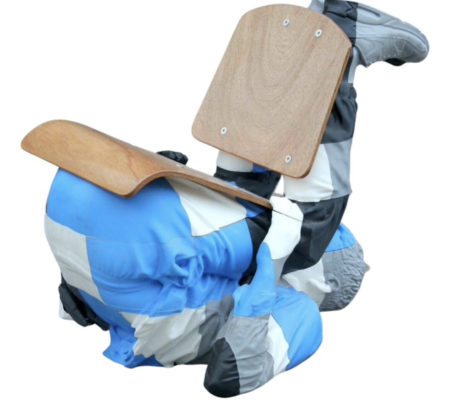 Armchair (in homage to Jean Prouvé), 2024
Armchair (in homage to Jean Prouvé), 2024


